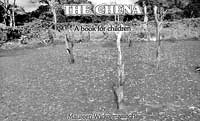
A lesson wrapped in rhymeThe Chena - a book for children by Maureen Wickremasinghe Published by the author. Rs 150. The Chena is Maureen Wickremasinghe’s latest publication for children. She calls it a multi-purpose book, and indeed, it is a story that explains chena cultivation to our increasingly urbanised children, a reader for children learning English, and a song that celebrates a traditional way of life. And rather unusually for a children’s book, it also uses two types of visual media to tell the story, with monochrome sketches side by side with colour photographs. A primary school English teacher and trainer with a long and dedicated career, Maureen’s chief concern is to provide low cost, attractive books in English for children learning the language. In the local publishing industry that puts out glitzy books that are sometimes of dubious quality and usefulness, Maureen’s books stand out by addressing the needs of the reader explicitly and imaginatively. For instance, in her trishaw books, a graded series of four readers, she uses local situations and language that children encounter in their own environment to make the books more real and interesting.
The Chena is an extension of the same commitment. The book presents language for children set in a local context through ballad-like four line verses, using vocabulary that is relevant and within their grasp. Set to music borrowed from a traditional English children’s rhyme, the verses are simple and unadorned, yet whimsical and poetic. The verses describe the traditional life of a chena farmer – the clearing of the land, the burning, the tilling, the planting, the growing and the final reaping of the harvest. They are also written from a child’s point of view, and the sketches and the photographs complement the verses to illustrate the children’s involvement in the activities: as her mother digs, a child walks behind her placing seeds in each hole on the ground. Later as the crops grow, grownups keep a watch for the elephants, while children happily chase away flocks of marauding birds. Interestingly, the cycle of the chena farm depicted in the verses is by no means a mere nostalgic representation: it is based on a real-life cultivator that she met and got to know during her frequent visits to Wilpattu. The book is a useful tool for teachers of English. The new reforms in the English curriculum have reinforced the importance of songs as a means of learning English, so the book is a valuable addition to a teacher’s collection. It also presents a few teaching activities based on the verses, along with the music to the song. The activities are based on sound learning theories and address the needs of the different types of learners found in an average classroom: the kinaesthetic, the musical, the visual and the oral learner. And with English medium education becoming more and more popular in our schools, this book offers content that supplements grade six Environmental Studies. Maureen’s books fill a niche created by the dearth of high quality locally produced books of local interest that promotes reading among children beginning to learn English. There is no shortage – if you have the money – of good children’s books from abroad, from the graded Ladybird readers to all the Harry Potters. But we certainly need more local equivalents to make reading in English more real to the large majority of children in the country who cannot really relate to Peter and Jane in the English seaside town or find the language of the winsome wizards at Hogwarts a bit beyond their level, or more than anything, whose parents find these books entirely unaffordable on their salaries. Maureen’s work, designed and produced on her own, happily addresses all these needs. The Chena is available at the Barefoot and Sarasavi bookshops, and with the author, who may be contacted on 011-5346368. |
|| Front
Page | News | Editorial | Columns | Sports | Plus | Financial
Times | International | Mirror | TV
Times | Funday
Times || |
| |
Reproduction of articles permitted when used without any alterations to contents and the source. |
© Copyright
2007 | Wijeya
Newspapers Ltd.Colombo. Sri Lanka. All Rights Reserved. |
